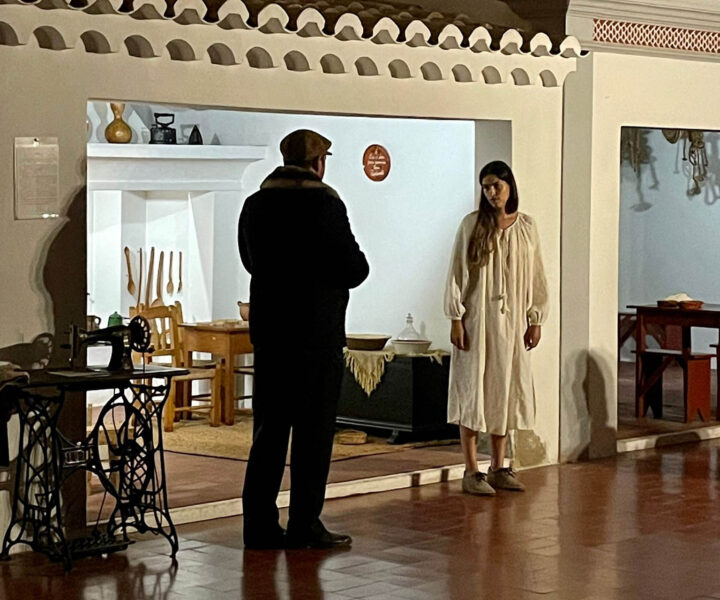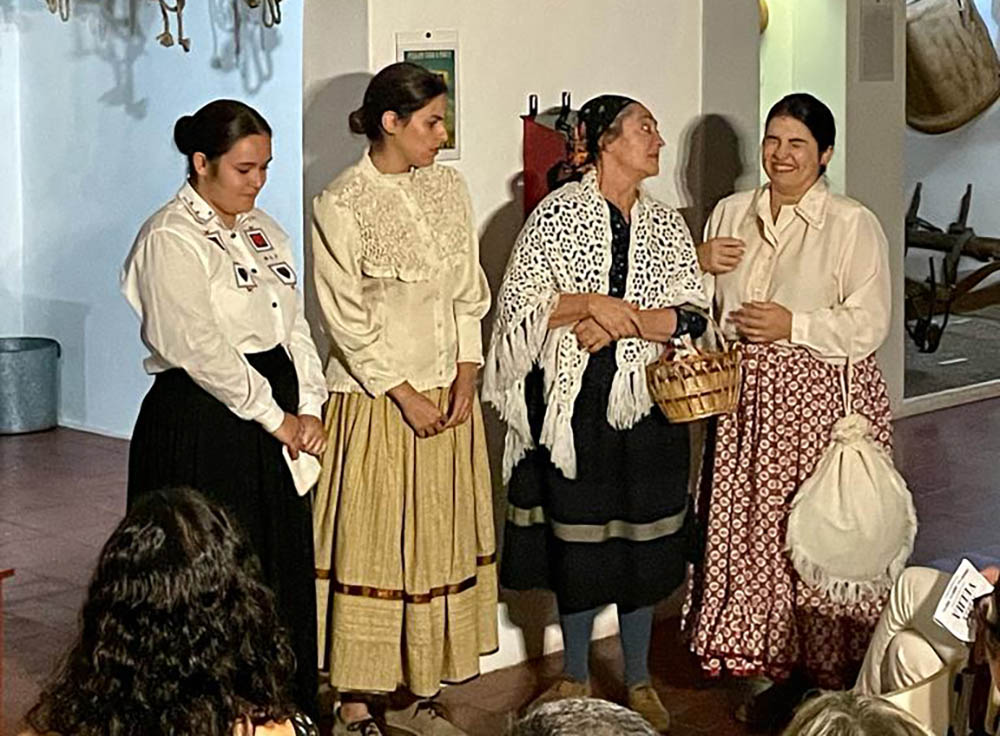The museum's static figures came to life and taught visitors to this space of Algarve relics a well-kept secret: when heritage is combined with imagination, we are building citizenship.
Whoever, when visiting the genuine Algarve Regional Museum, last weekend, had entered the wing of the reconstruction of the Algarve house of Olhão in the evening, would have seen the static figures that dominate there, filled with life and words, greeting visitors with a touching text by António Gambóias.
Aldeia Velha is a work by Companhia DoisMaisUm, produced by Associação Cultural Música XXI, in partnership with the Agrupamento de Escolas Pinheiro e Rosa.
This show is supported by the Regional Directorate for Culture of the Algarve and the Municipality of Faro. It will be on stage again this Monday, October 31st, and on November 3rd and 5th, at 21 pm, as well as on the 00th, at 6 pm.
It is a theater show that aims to fulfill a double objective: «to design a theatrical presentation for a museum space, but also to attend to and honor the entire framework inherent to the historical collection and architectural space», explains the Música XXI association.
This project «is based around the idea of a living museum, since it presents a show in which ways of life, affections, fears and political questions are portrayed from a sociological framework of the Algarve region in the middle of the dictatorship. In this sense, it is foreseen not only the presentation of this show in Faro, but also in Tavira, a locality directly involved in one of the political episodes included in the narrative», he adds.

It is also a challenge to write a text for theater based on a very significant story by Manuel da Fonseca, the wide, «imbued with a shrewd neorealist spirit».
For the author and director, theater teacher and actor António Gambóias, «theater cannot fail to be an interventional art, I wanted to problematize nowadays, in an aged and impoverished region, themes that, after all, are always and confront us with Manuel da Fonseca's own question: are we not in the presence of a living world of people already dead?»
The Algarve Regional Museum has a room dedicated to the ways of living and doing of the rural populations of the Algarve, based on the detailed recreation of the traditional house in Olhão.
The Museum built five partitions in masonry that present the traditional bedroom, the common room with the large fireplace where cooking was carried out, the tavern, with numerous objects from the mid-XNUMXth century, an oven house and the house for agricultural implements.
It is within these divisions that the show Aldeia Velha takes place, based on the homonymous play. The characters recreated dialogues of the time from an oral tradition recorded in the author's affective memories.
The narrative develops around the sale of the taverneiro, which is located in the square, a true meeting point for all the characters: the smuggler, the girls who still wash their clothes in the river, the woman who moved to a fishing village in tuna in search of better conditions, the tavern keeper's wife who reads letters to those who cannot read, the old lady who follows, always with wise words, the life and changes of the village.
The ending returns a note of hope to the abandoned villages, through their rescue as ecological and pedagogical villages. For the viewer, the memory of a hard text will remain alive, without ceasing to be captivating, which enunciates the life of the populations of the interior before they were condemned to abandonment.
Aldeia Velha is interpreted by Ana Cristina Oliveira, Ana Isabel Baptista, Bruno Filipe, Catarina Silva, Joana Coelho, Vasco Coelho and Tatiana Cabral. The staging assistance was provided by Luna Ruivo.



















Comments